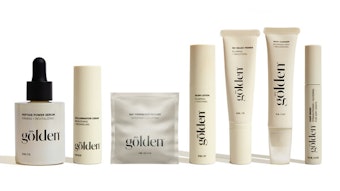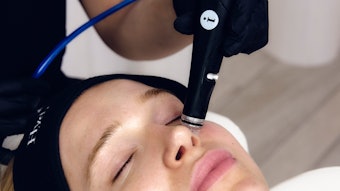In 1927, Max Factor introduced a new makeup formula, Satin Smooth Liquid Panchromatic Foundation, that provided the correct degree of light reflection required by the sensitive new Panchromatic film used for color motion pictures. For this contribution, he was recognized with a special technology Oscar from the Academy of Motion Picture Arts and Sciences in 1928.
Max Faktor had come a long way from Lodz, Poland, where he was born in 1877. At eight years old, he served as an apprentice to a dentist/pharmacist in Russia. His years of mixing “potions” translated well for formulating cosmetic products. By age 20, Faktor had opened his first shop in Moscow, selling handmade rouges, creams, fragrances and wigs.
During Russia’s political and economical upheavals, Faktor and his family immigrated to the United States in 1902, where his last name was changed to Factor at Ellis Island The family stayed briefly in St. Louis, where he set up a small concession at the 1904 World’s Fair, selling perfume, makeup and hair goods, and where his second son, Francis, who later changed his name to Max Factor Jr., was born.
Factor and his family moved further west a few years later and Max Factor & Company was founded in Los Angeles on January 2, 1909. The first store, located in the theater district, sold Factor’s own creations as well as distributed Leichner and Miner stick grease paint, an early makeup made with pigment and heavy oil.
Because stick grease paint was too thick for the screen, in 1914 Factor created the first grease paint in cream form, packaged in a jar. The grease paint cream soon was followed by the world’s first “sanitary” makeup grease paint, packaged in a collapsible tube. This makeup, created in 12 graduated shades, was formulated specifically by Factor for film actors, and the company claimed it would not crack or cake.
When color motion pictures were introduced in the 1920s, Factor introduced a new line of compatible makeup shades for this new media. Now known as “the” makeup expert, Factor, who is credited with coining the word “makeup,” was tapped by the Encyclopedia Britannica to write an article on makeup for its 14th edition (1927-1973). As Factor explained, makeup is both “corrective and creative.”
In the mid-1930s, after much laboratory research and experimentation, Factor developed an entirely new type of material—a powder makeup in solid cake form to be applied with a slightly moistened silk sponge. The product was called Pancake Makeup, and the name was registered with the United States Patent and Trademark Office in 1937.
Film stars began wearing pancake makeup offscreen, as well as on-screen. The company launched an advertising campaign to the general public that featured film stars; the Max Factor retail business boomed when Pancake Makeup became one of the fastest-growing, largest-selling single makeup products in the history of cosmetics.
During the Max Factor Jr. tenure, the company continued to introduce innovative products such as Pan-Stik Makeup (1948) and Erace (1954), the original cover-up cosmetic.
Procter & Gamble acquired Max Factor in 1991. P&G’s Web site, www.pg.com, states: “There is no cosmetic company anywhere that has been as unmistakably associated with the most beautiful women in the world as Max Factor. The company’s leadership in educating women to the subtleties of fashion makeup is legendary.”










